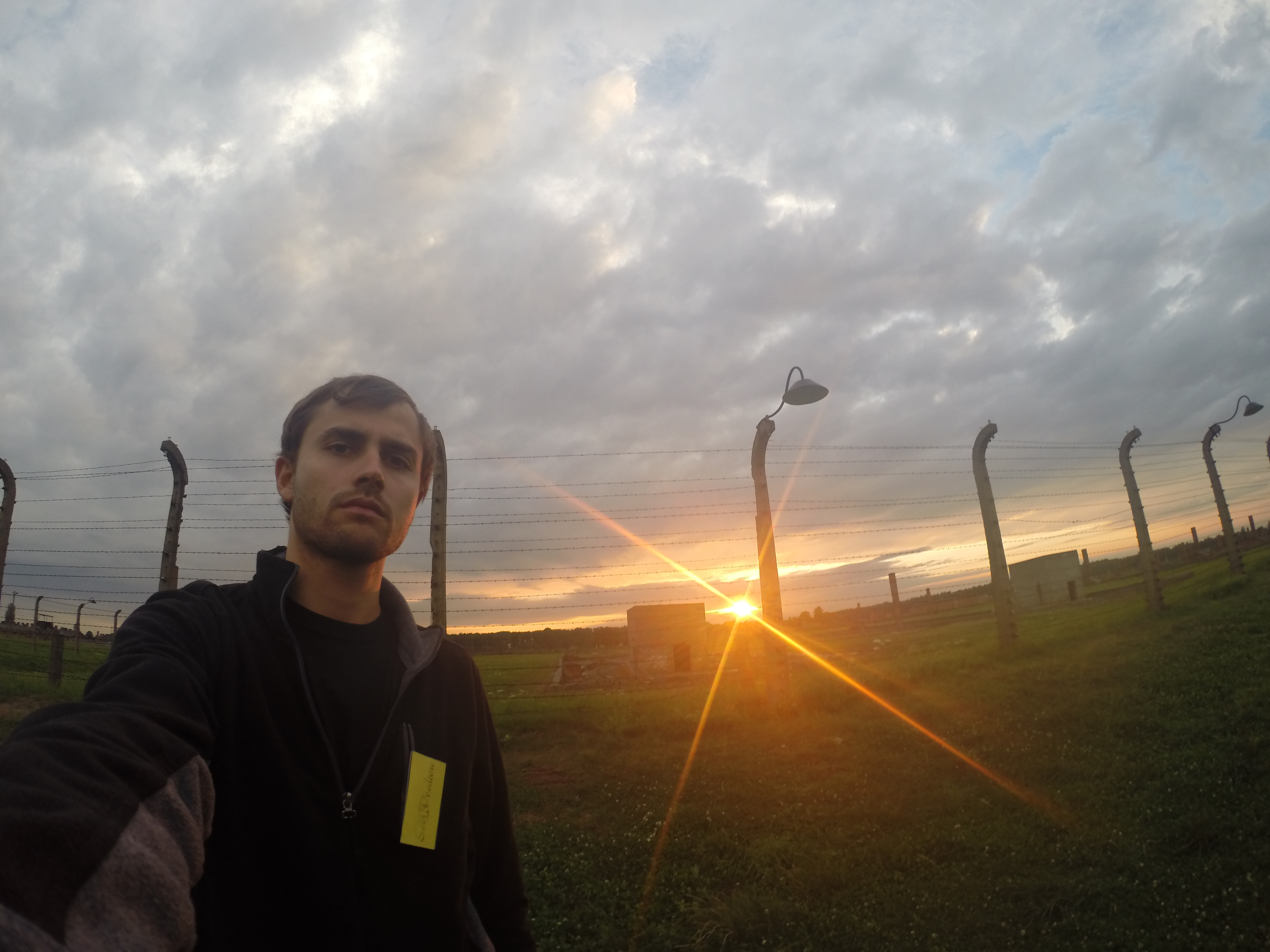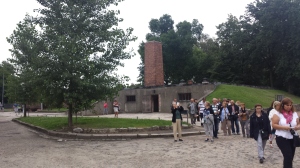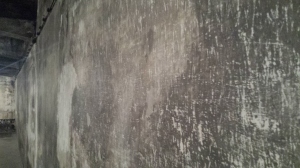For those with a strong stomach, Auschwitz-Birkenau, the largest concentration camp in history, is an important place to visit. It is sad, loaded with negative energy, but it makes you reflect about life, the importance of the little things and the freedom that we have in the world today. The city is about an hour from Krakow and the English tour has several time options, including 9:30, 12:30 and 14:30. It was possible to do it on my own, but I booked a package for 135 PLN (36 USD) to be fetched and brought in the hostel, plus the guided tour.

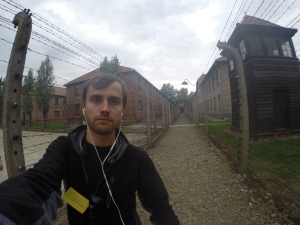
When arriving at Auschwitz-Birkenau, as it is called the concentration camp, it is already possible to feel the heavy climate. The German phrase “arbeit macht frei,” work makes free, is the main gateway to the nightmare. The tour begins with the museum that is distributed inside the old houses where the Jews and other peoples were repressed by the Nazis. The first building is possible to see some photos of the time, documents and a brief contextualization of the scene that was the site between 1940 and 1945. In one of the panels, shows the amount of people who were brought to the Auschwitz camp: 1.3 million, 1.1 million Jews, 150,000 Poles and about 60,000 prisoners and other ethnic groups. The Second Building focuses on Jewish objects such as shoes, combs, shavers, suitcases, crutches, pots. In this building the objects are presented in large aquariums and in large quantities. The idea is to shock the visitor and give a notion of the quantity and size of the Holocaust. In the same building there is an aquarium with hundreds of boxes of poison that were used in the gas chambers. In one of the rooms, where a photo is not allowed, there is an aquarium with two tons of hair. It’s scary and very sad, one of the heaviest parts of the tour.
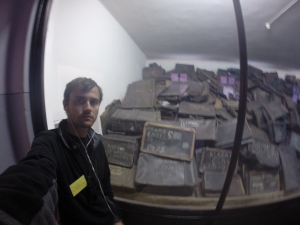
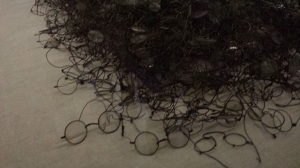
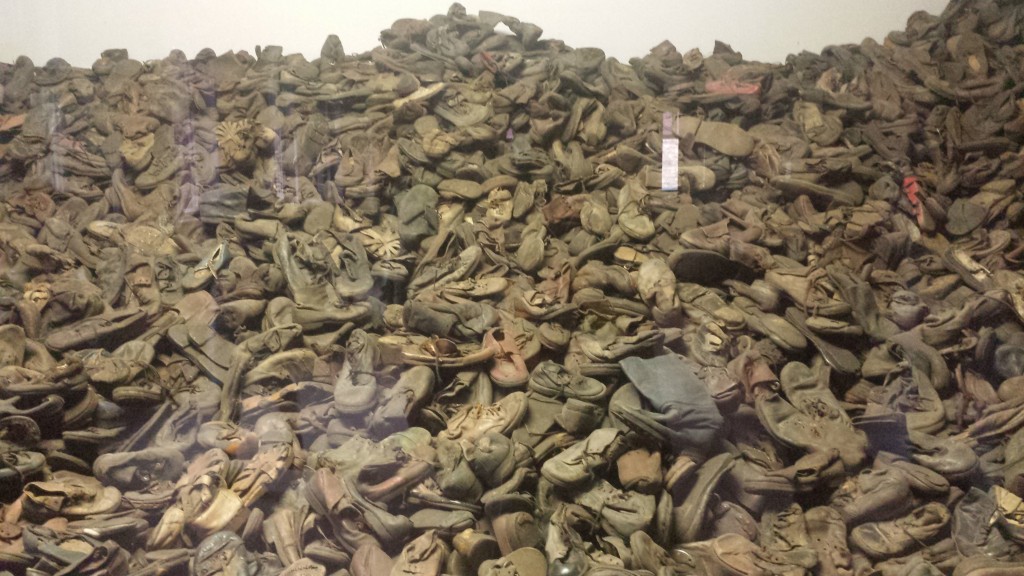

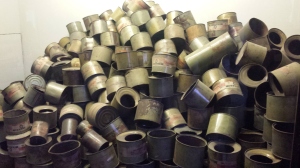
The following house focuses on the living conditions of the time, including dormitories, toilets and other dependencies. In this building there is also a corridor with photos of several Jews who died in the concentration camp. I found a picture of a Franz. The fourth place of visit is the underground chain where photographs are also not allowed.
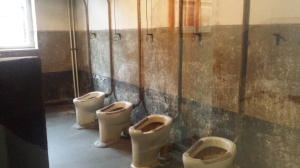
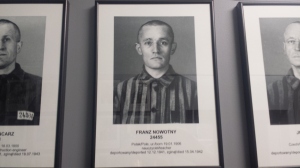
On the way I saw a large group of Jews visiting the site, where historically their people suffered a massacre.

The next part of the tour was in the other side of the field where we entered the heaviest environment, the gas chamber and the crematorium. You can see scratches all over the wall.
This part of the tour ends and we go from van to the train terminal, the place where Jews and Nazis arrived. In this part you can see the wagons where there were about 100 people in unhealthy conditions for up to seven days without eating. We entered a housing and a tent that served for sick people and the toilets were just holes in the concrete.
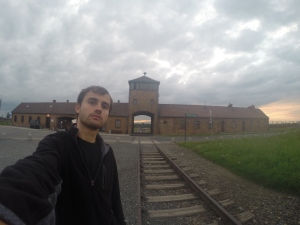

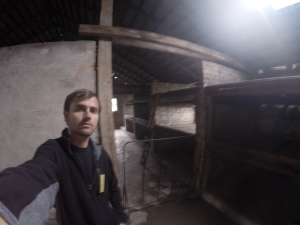
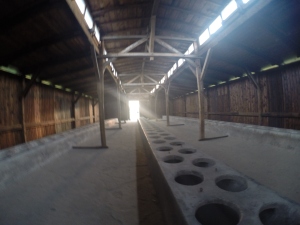
We also passed a monument to the people massacred by the Nazis, who even had a special homage of someone recently left.
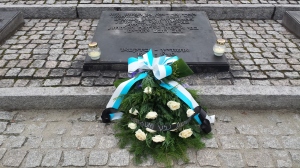
The ride is sad and heavy, but it is a must see place given its historical importance. The only happy part was to see a beautiful sunset. May God enlighten the souls who are in heaven and bless their families who are still alive.


